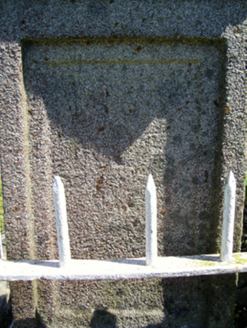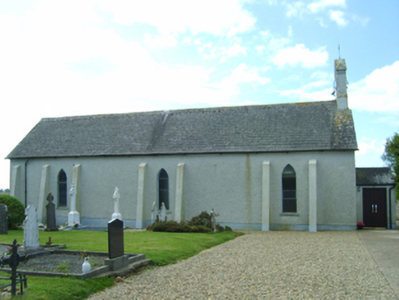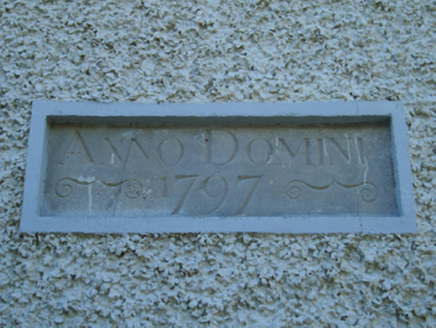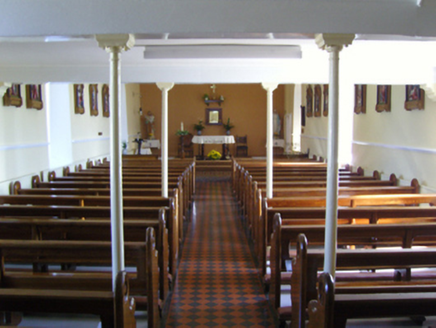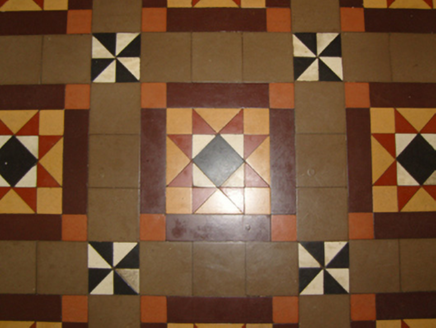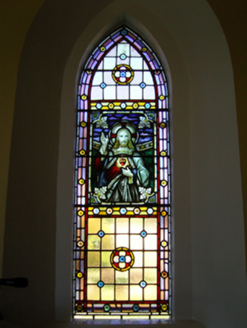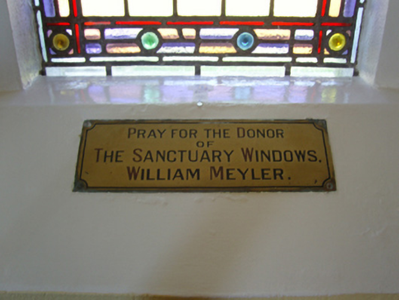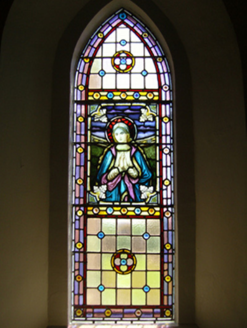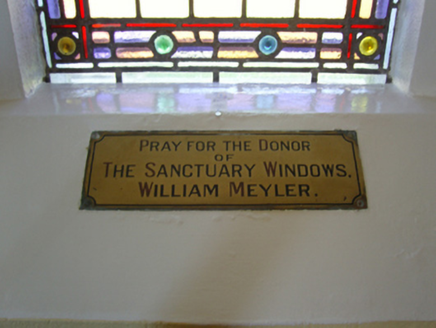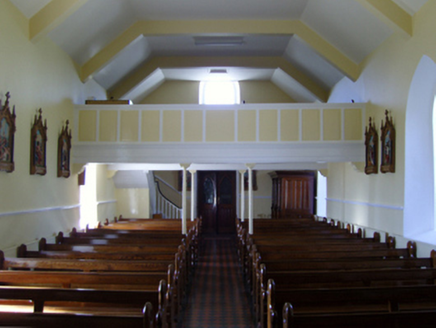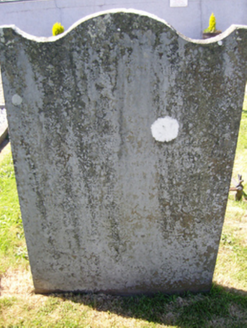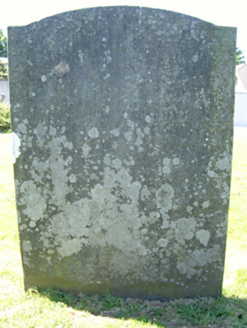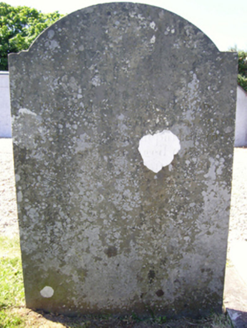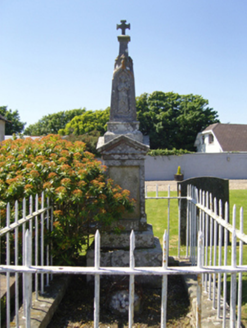Survey Data
Reg No
15705305
Rating
Regional
Categories of Special Interest
Architectural, Artistic, Historical, Social
Original Use
Church/chapel
In Use As
Church/chapel
Date
1795 - 1800
Coordinates
307881, 107413
Date Recorded
25/09/2007
Date Updated
--/--/--
Description
Detached three-bay double-height single-cell Catholic church, dated 1797, on a rectangular plan with single-bay single-storey gabled projecting porch to entrance (west) front. "Improved", 1858, producing present composition. Stabilised, 1971. Renovated, 1989, with sanctuary reordered. Pitched slate roofs including pitched (gabled) slate roof (porch), lichen-covered clay ridge tiles with rendered, ruled and lined buttressed gabled bellcote to apex to entrance (west) front framing cast-iron bell, and cast-iron rainwater goods on rendered stepped eaves retaining cast-iron downpipes. Roughcast battered walls bellcast over rendered plinth with paired cement rendered battered buttresses. Lancet window openings with concrete sills, and concealed dressings framing storm glazing over fixed-pane fittings having leaded stained glass margins centred on leaded stained glass panels. Lancet window opening to entrance (west) front with concrete sill, and concealed dressings framing storm glazing over fixed-pane fitting. Interior including vestibule (west); square-headed door opening into nave with glazed timber panelled double doors; full-height interior with timber panelled choir gallery (west) on paired cast-iron pillars, tessellated "quarry" tile central aisle between Maltese Cross-detailed timber pews, Gothic-style timber stations between frosted glass windows with pair of stained glass memorial windows (east), and encaustic tiled stepped dais to sanctuary (east) reordered, 1989, with carpeted stepped "predella" supporting replacement timber altar table. Set in landscaped grounds with roughcast piers to perimeter having stepped capping supporting spear head-detailed wrought iron double gates.
Appraisal
A church representing an integral component of the ecclesiastical heritage of south County Wexford with the architectural value of the composition, one clearly showing the hallmarks of a period of construction coinciding with the gradual dismantling of the Penal Laws in the late eighteenth century, suggested by such attributes as the rectilinear "barn" plan form, aligned along a liturgically-correct axis; the slender profile of the openings underpinning a "medieval" Gothic theme; and the handsome bellcote embellishing the roofline as a picturesque eye-catcher in the landscape: meanwhile, such traits as the stabilised battered silhouette illustrate the vernacular provenance of a church originally showing a thatch roof finish (de Vál 2004, 114). Having been well maintained, the elementary form and massing survive intact together with quantities of the historic or original fabric, both to the exterior and to the vaulted interior reordered (1989) in accordance with the liturgical reforms sanctioned by the Second Ecumenical Council of the Vatican (1962-5) where contemporary joinery; and the Meyler Memorial Windows, all highlight the modest artistic potential of a church forming part of a neat self-contained group alongside the adjacent Saint Fintan's National School (see 15705306) with the resulting ensemble making a pleasing visual statement in a rural village setting.
